Multi-Parameter Optimization for the Wet Steam Accumulator of a Steam-Powered Catapult
Abstract
:1. Introduction
2. Steam-Powered Catapult Launch System and Catapult Launch Process of Carrier-Based Aircraft
- The preparatory stage of catapult launch. At this portion, the movement of the aircraft under its own power from entry into the aft section approach ramp, to the hookup condition. The aircraft being decelerated to zero velocity at hookup condition in which the aircraft is spotted on the catapult ready for tensioning.
- Tension. That operation prior to firing the catapult during which a specified tensioning force is applied to the launch bar by moving the catapult shuttle spreader forward. Power application may occur before, during or after tensioning.
- Full takeoff power. That condition in which the full takeoff power is applied to the carrier-based aircraft.
- Catapult force build-up with holdback. The portion in the launching operation at which the catapult tow force is increasing before effectively releasing of the carrier-based aircraft.
- Release. The point in the launching operation at which the final tensioning process has been completed, the catapult fired and the catapult tow force increased to such a magnitude as to disengage the repeatable release holdback bar and effective release of the aircraft.
- Power stroke. That part of the launching run after releasing in which the applied catapult towing force is accelerating the aircraft.
- Free deck run with all gears on deck. That part of the launching run from the end of the power stroke to the point at which the nose gear leaves the deck.
- Free deck run with nose gear only leaves the deck. That part of the launching run from the nose gear leaves the deck to the end of the carrier deck.
- Fly away. The portion in the launching operation at which the carrier-based aircraft leaves the deck.
3. Mathematical Model of Wet Steam Accumulator Parameter Optimization
3.1. Modeling Assumptions.
- (1)
- The thermodynamic process of steam-powered catapult is an adiabatic process; this means that there is no heat transferred between steam catapult and the outside world.
- (2)
- Neglecting the space derivative for the state parameters of the steam-powered catapult, such as specific volume, temperature and enthalpy of the water and steam.
- (3)
- The wet steam accumulator and cylinder are rigid body.
- (4)
- The shape of wet steam accumulator is a circular cylinder.
- (5)
- The thermodynamic process of cylinder is a quasi-static process.
- (6)
- The steam has no friction with pipe wall during catapult launch for carrier-based aircraft.
- (7)
- The piston in cylinder is rigid body.
- (8)
- The fuselage of carrier-based aircraft is rigid body.
- (9)
- Neglecting the deck motion of aircraft carrier and airflow interference.
- (10)
- Carrier-based aircraft has no off-center during catapult launch.
- (11)
- The elevator angle is fixed during the whole process of catapult launch.
- (12)
- The mass of fuselage, wing and outer cylinder of shock absorber are regarded at nose gear rotation shaft, and use them as elastic support mass [22]; the mass of shock strut, wheel and tire are regarded at wheel axle, and use them as inelastic support mass.
3.2. Objective Function and Fitness Function of Wet Steam Accumulator Parameter Optimization
- Maximal sink-off-the-bow (SOB). Maximal SOB is 10 feet sink-off-of-the-bow (downward vertical displacement of the center of gravity of the aircraft below the static plane of the carrier flight deck after flyaway). It should not exceed the maximum SOB during a safe launching aircraft.
- Maximum angle of attack. The maximum angle of attack permitted in the catapult maneuver is governed by the onset of buffet and the loss of lateral control. It cannot exceed the angle of attack for 0.9 with cockpit control position fixed.
- Minimum rate of climb. The aircraft must achieve and maintain a rate of climb of at least 600 feet per minute within three seconds after the time of maximum sink.
3.3. Genetic Algorithm
3.3.1. Initialization Operation
3.3.2. Selection Operation
3.3.3. Crossover Operator and Mutation Operator
3.4. Thermodynamics Model of Steam-Powered Catapult
3.4.1. Thermodynamics Model of Wet Steam Accumulator
3.4.2. Mathematical Model of Launch Valve
3.4.3. Thermodynamics Model of Cylinder
3.5. Traction Release Device Methematical Model
3.5.1. Mathematical Model of Launch Bar
3.5.2. Mathematical Model of Holdback Bar
3.6. Statics Model of Tensioning
3.6.1. Statics Model of Piston
3.6.2. Statics Model of Aircraft
3.6.3. Statics Model of the Nose Gear
3.7. Statics Model of Full Takeoff Power
3.8. Mathematical Model of Catapult Force Build-Up with Holdback
3.8.1. Statics Model of Piston
3.8.2. Statics Model of Aircraft
3.8.3. Dynamics Model of Nose Gear
3.9. Mathematical Model of Release
3.10. Dynamics Model of Power Stroke
3.10.1. Dynamics Model of Piston
3.10.2. Dynamics Model of Aircraft
3.10.3. Dynamics Model of Nose Gear
3.11. Dynamics Model of Free Deck Run
3.11.1. Dynamics Model of Aircraft
3.11.2. Dynamics Model of Nose Gear
3.12. Dynamics Model of Fly Away
4. Experiment Design and Verification of the Parameters Optimization
4.1. Experiment Design and Results of Multiple Parameters Optimization
4.2. Simulation Verification and Analysis of the Optimal Wet Steam Accumulator Parameters
5. Conclusions
- (1)
- A completely mathematical model of catapult launch of the aircraft used to parameters optimization for wet steam accumulator is established. This complete mathematical model is composed of thermodynamics model of steam-powered catapult, mathematical model of traction release device, statics model of tensioning, statics model of full takeoff power, mathematical model of catapult force build-up with holdback, model of release, dynamics model of power stroke, dynamics model of free deck run and dynamics model of fly away.
- (2)
- An effective GA method used for parameter optimization of wet steam accumulator of steam-powered catapult has been presented, and it can find the optimal parameters of wet steam accumulator to increase the safe launching of aircraft during catapult launch process.
- (3)
- The study result can give a theory reference to design and test the wet steam accumulator for steam-powered catapult.
Author Contributions
Funding
Conflicts of Interest
Nomenclature
| Steam pressure of wet steam accumulator, MPa | |
| Water level of wet steam accumulator, m | |
| Volume of wet steam accumulator, m3 | |
| Radius of wet steam accumulator, m | |
| The latent heat of vaporization of water, kJ/kg | |
| Specific enthalpy of the saturated steam in wet steam accumulator, kJ/kg | |
| Specific enthalpy of the saturated water, kJ/kg | |
| Evaporation rate of water, kg/s | |
| Density of water, kg/m3 | |
| Volume of water, m3 | |
| Specific enthalpy of water, kJ/kg | |
| Relaxation time, s | |
| The water mass changes due to evaporation and condensation rates, kg/s | |
| The steam mass changes due to evaporation and condensation rates, kg/s | |
| Condensation rate of water, kg/s | |
| Mass flow rate at steam outlet, kg/s | |
| The energy of outlet flows at the wet steam accumulator, kJ/s | |
| Specific enthalpy of steam in wet steam accumulator, kJ/kg | |
| Partial derivatives of thermodynamic properties of water and steam, m3/kJ | |
| Partial derivatives of thermodynamic properties of water and steam, m3/kg·MPa | |
| Specific volume of water, m3/kg | |
| Specific volume of steam in wet steam accumulator, m3/kg | |
| Net energy of water where inlet and outlet flows at the wet steam accumulator boundaries, kJ/s | |
| Heat transfer rate from the superheated steam to the water, kJ/s | |
| Mass of water, kg | |
| Mass of steam in wet steam accumulator, kg | |
| Isobaric cubic expansion coefficient of water, K−1 | |
| Isobaric cubic expansion coefficient of steam, K−1 | |
| Specific isobaric heat capacity of water, kJ/kg·K | |
| Specific isobaric heat capacity of steam, kJ/kg·K | |
| Isothermal compressibility of water, MPa−1 | |
| Isothermal compressibility of steam, MPa−1 | |
| Thermodynamic temperature of water, K | |
| Thermodynamic temperature of steam in wet steam accumulator, K | |
| The length of wet steam accumulator, m | |
| Volume of steam in wet steam accumulator, m3 | |
| Equivalent effective cross-sectional area of launch valve and pipe between wet steam accumulator and cylinder, m2 | |
| Ratio of specific heat | |
| Gas constant of steam, J/kg·K | |
| Steam pressure of cylinder, MPa | |
| Critical pressure, MPa | |
| Accumulator outlet area, m2 | |
| Effective launch valve opening area, m2 | |
| Cylinder inlet area, m2 | |
| Displacement of piston, m | |
| Area of steam act on piston, m2 | |
| Initial displacement of piston, m | |
| Steam pressure of act on piston, N | |
| Steam pressure of act on piston on the other side, MPa | |
| Area of steam act on piston on the other side, m2 | |
| Catapult force of launch bar, N | |
| Axial load of launch bar, N | |
| Angle between launch bar axis and deck, Deg | |
| Vertical component of axial load of launch bar, N | |
| Longitudinal component of axial load of holdback bar, N | |
| Axial load of holdback bar, N | |
| Angle between holdback axis and deck, Deg | |
| Vertical component of axial load of holdback bar, N | |
| Tensioning force, N | |
| Friction force of piston, N | |
| Mass of piston, kg | |
| Acceleration due to gravity, m/s2 | |
| Coefficient of friction between the piston and cylinder wall | |
| Friction force between nose gear and deck, N | |
| Friction force between landing gear and deck, N | |
| Deck reaction of nose gear, N | |
| Coefficient of friction between deck and tire | |
| Deck reaction of landing gear, N | |
| Mass of aircraft, kg | |
| Elastic support mass, kg | |
| Air spring force, N | |
| Non-elastic support mass, kg | |
| Thrust of aircraft, N | |
| Pitch angle of aircraft, Deg | |
| Strut friction force of nose gear, N | |
| Hydraulic damping force of nose gear, N | |
| Acceleration of elastic support mass, m/s2 | |
| Gear stroking velocity, m/s | |
| Acceleration of non-elastic support mass, m/s2 | |
| Minimum release load of holdback bar, N | |
| Maximum design weight of aircraft, N | |
| Acceleration of piston, m/s2 | |
| Aerodynamic drag, N | |
| Acceleration of aircraft, m/s2 | |
| Equivalent aerodynamic lift act on nose gear, N | |
| Displacement of non-elastic support mass, m | |
| Radius of tire of nose gear, m | |
| Aerodynamic lift, N | |
| Flight path angle, Deg | |
| Longitudinal component of acceleration of aircraft, m/s2 | |
| Vertical component of acceleration of aircraft, m/s2 | |
| Aerodynamic moment about c.g., N·m | |
| Air density, kg/m3 | |
| Wing area of aircraft, m2 | |
| Speed of aircraft, m/s | |
| Mean geometric chord, m | |
| Aerodynamic pitching moment coefficient | |
| Body axis lift moment arm, m | |
| Aerodynamic lift at aircraft fixed axis system, N | |
| Body axis drag moment arm, m | |
| Aerodynamic drag at aircraft body-fixed coordinate system, N | |
| Total moment about c.g., N·m | |
| Thrust moment arm, m | |
| Pitch angular acceleration about the c.g., Deg/s2 | |
| Moment of inertia in pitch, kg·m2 | |
| At the time of maximal SOB, s | |
| Peak angle of attack, Deg | |
| Climb rate after the time of maximal SOB, m/s |
References
- Shevach, G.; Blair, M.R.; Hing, J.; Venetsky, L.; Martin, E.; Wheelock, J. Towards Performance Prognostics of a Launch Valve; Naval Air Warfare Center Lakehurst United States: Lakehurst, NJ, USA, 2014.
- Slavin, F.J. Aircraft steam catapult. Mech. Eng. 1969, 91, 42–46. [Google Scholar]
- Sun, B.Z.; Guo, J.M.; Lei, Y.; Yang, L.B.; Li, Y.J.; Zhang, G.L. Simulation and verification of a non-equilibrium thermodynamic model for a steam catapult’s steam accumulator. Int. J. Heat Mass Transf. 2015, 85, 88–97. [Google Scholar] [CrossRef]
- Steinmann, W.; Eck, M. Buffer storage for direct steam generation. Sol. Energy 2006, 80, 1277–1282. [Google Scholar] [CrossRef] [Green Version]
- Stevanovic, V.D.; Maslovaric, B.; Prica, S. Dynamics of steam accumulation. Appl. Therm. Eng. 2012, 37, 73–79. [Google Scholar] [CrossRef]
- Lucas, C.B. Catapult Criteria for A Carrier-Based Airplane; AD702814; Defense Technical Information Center: Fort Belvoir, WV, USA, 1968.
- Naval Air Engineering Center. Mil-Std-2066(AS) Military Standard Catapulting and Arresting Gear Forcing Functions for Aircraft Structural Design; Department of the Navy Air Systems Command: Patuxent, MD, USA, 1981.
- Cheng, G.; Ni, H.; Sun, F. Modeling and simulation research on naval steam-power aircraft launch system. J. Wuhan Univ. Technol. 2010, 34, 301–305. [Google Scholar]
- Zhu, Q.; Lu, P.; Yang, Z. Simulation research on deadload steam catapult systems. J. Harbin Eng. Univ. 2018, 39, 1979–1986. [Google Scholar]
- Shi, Y.; Shi, T.; Ma, W.; Gao, C. Design and simulation of inner and outer cylinder-type steam catapult. Adv. Mech. Eng. 2018, 10, 1–7. [Google Scholar] [CrossRef]
- Zhu, Q.; Lu, P.; Yang, Z.; Cui, Y. Model research of steam catapult launch process for carrier-based aircraft. In Proceedings of the 37th Chinese Control Conference, Wuhan, China, 25–27 July 2018. [Google Scholar]
- Yu, H.; Nie, H. Dynamics analysis of carrier-based aircraft with off-center catapult launch. J. Nanjing Univ. Aeronaut. Astronaut. 2010, 42, 537–542. [Google Scholar]
- Zhu, Q.; Liu, H.; Li, X. Research on carrier-based aircraft catapult launching in the case of different eccentricity. Flight Dyn. 2016, 34, 10–14. [Google Scholar]
- Wei, X.; Liu, C.; Nie, H.; Zhang, M.; Yin, Q. Dynamics and test method of carrier-based aircraft nose landing gear sudden extension. Acta Aeronaut. Astronaut. Sin. 2013, 34, 1363–1369. [Google Scholar]
- Zhang, M.; Nie, H.; He, Z. Parameter optimization of nose landing gear considering both take-off and landing performance of catapult take-off carrier-based aircraft. Trans. Nanjing Univ. Astronaut. Aeronaut. 2016, 33, 187–198. [Google Scholar]
- Eppel, J.C.; Hardy, G.; Martin, J.L. Flight Investigation of the Use of A Nose Gear Jump Strut to Reduce Takeoff Ground Roll Distance of Stol Aircraft; Ames Research Center, National Aeronautics and Space Administration: Moffett Field, CA, USA, 1994.
- Wilson, T. F-35 carrier suitability testing. In Proceedings of the 2018 Aviation Technology, Integration, and Operations Conference, Atlanta, GA, USA, 25–29 June 2018. [Google Scholar]
- Zhen, Z.; Jiang, J.; Wang, X.; Li, K. Modeling, control design, and influence analysis of catapult-assisted take-off process for carrier-based aircrafts. Proc. Inst. Mech. Eng. Part G J. Aerosp. Eng. 2018, 232, 2527–2540. [Google Scholar] [CrossRef]
- Loftus, J.; Piekarski, B. Carrier suitability tests of the rafale airplane in the united states. In Proceedings of the Biennial Flight Test Conference, Hilton Head, SC, USA, 20–23 June 1994. [Google Scholar]
- Wallace, M.M. F/A-18E/F Catapult Minimum End Airspeed Testing. Master’s Thesis, University of Tennessee, Knoxville, TN, USA, 2002. [Google Scholar]
- Naval Air Engineering Center. Mil-L-22589d(AS) Launching System, Nose Gear Type, Aircraft; Naval Air Engineering Center: Lakehurst, NJ, USA, 1991.
- Zhu, Q.; Li, X.; Yu, Y. Analysis of dynamic characteristics of catapult launch for a carrier-based aircraft with sudden load discharge. J. Harbin Eng. Univ. 2012, 33, 1150–1157. [Google Scholar]
- Sanford, K.; Gregory, N. Thermodynamics; Cambridge University Press: New York, NY, USA, 2012. [Google Scholar]
- Wagner, W.; Kretzschmar, H.J. International Steam Tables; Springer: Berlin, Germany, 2007. [Google Scholar]
- Wagner, W.; Cooper, J.R.; Dittmann, A.; Kijima, J.; Kretzschmar, H.-J.; Kruse, A.; Mares, R.; Oguchi, K.; Sato, H.; Stocker, I.; et al. The IAPWS Industrial Formulation 1997 for the Thermodynamic Properties of Water and Steam. ASME J. Eng. Gas Turbines Power 2000, 122, 150–182. [Google Scholar] [CrossRef]
- U.S. Naval Air Engineering Center. Evaluation of Advanced Method for Steam Catapult Performance Prediction with Shipboard Test Data; AD742804; U.S. Naval Air Engineering Center: Lakehurst, NJ, USA, 1972.
- MIL-A-8863C. Airplane Strength and Rigidity Ground Loads for Navy Acquired Airplanes; United States Coast Guard: Washington, DC, USA, 1993. [Google Scholar]
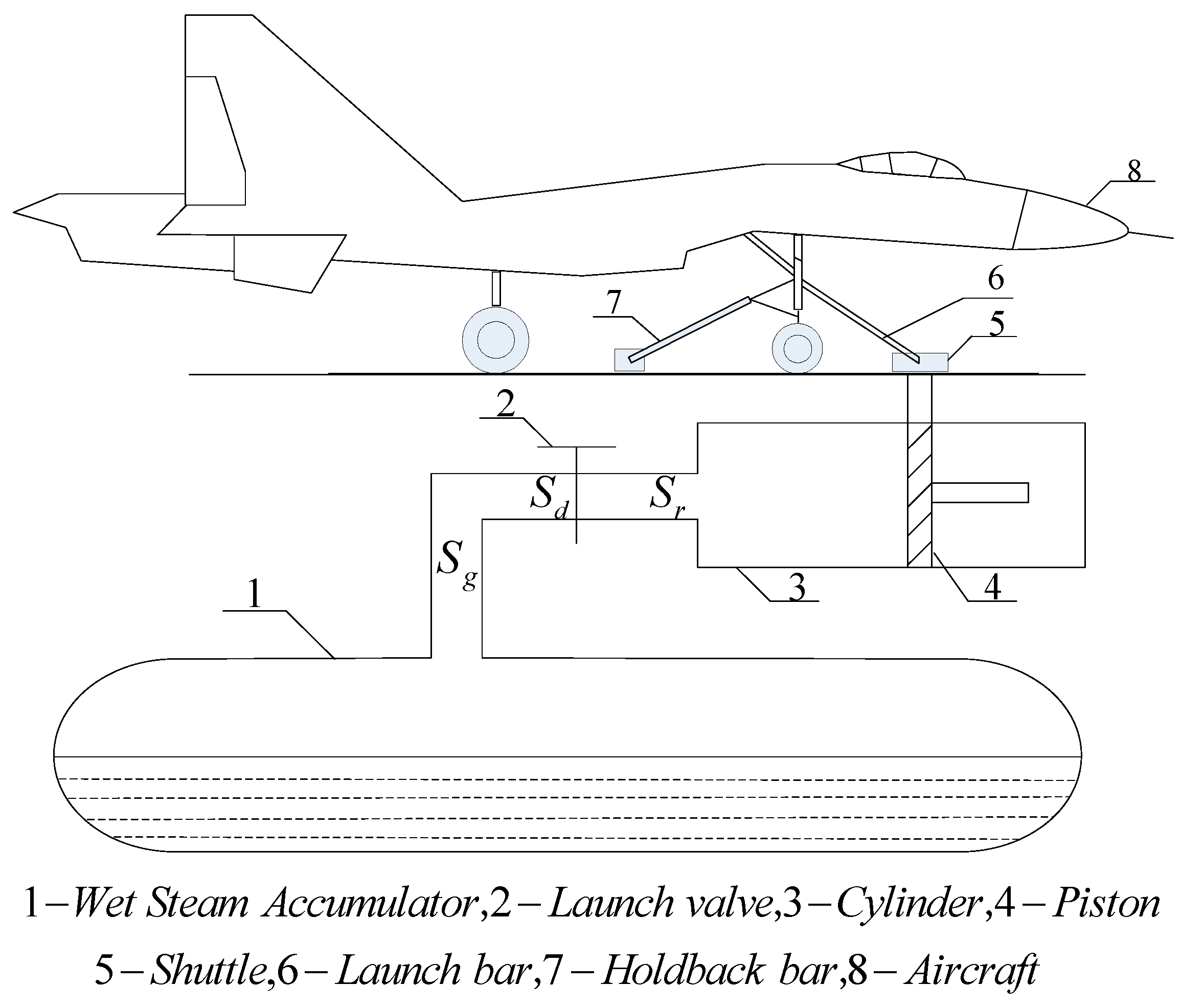


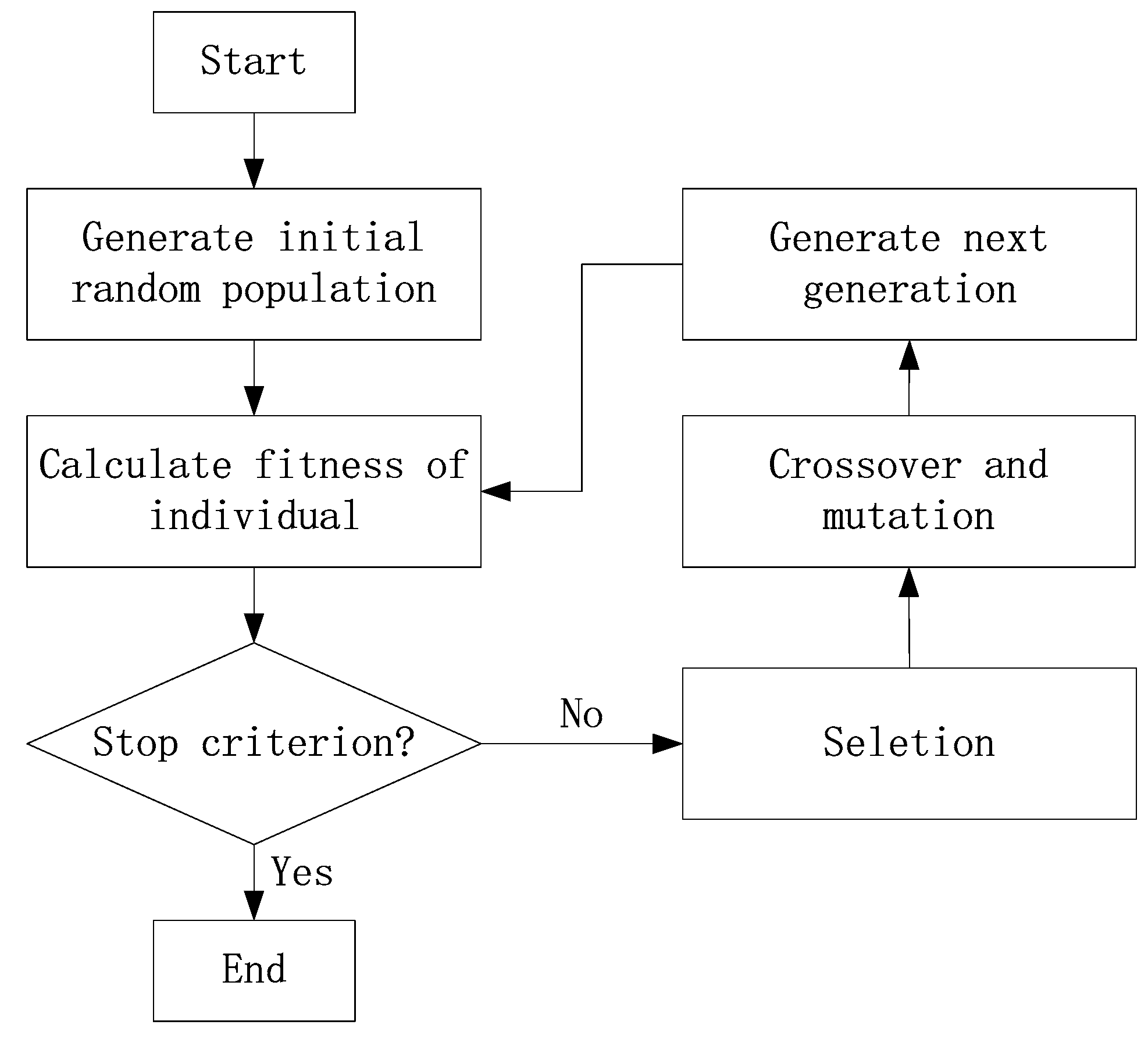
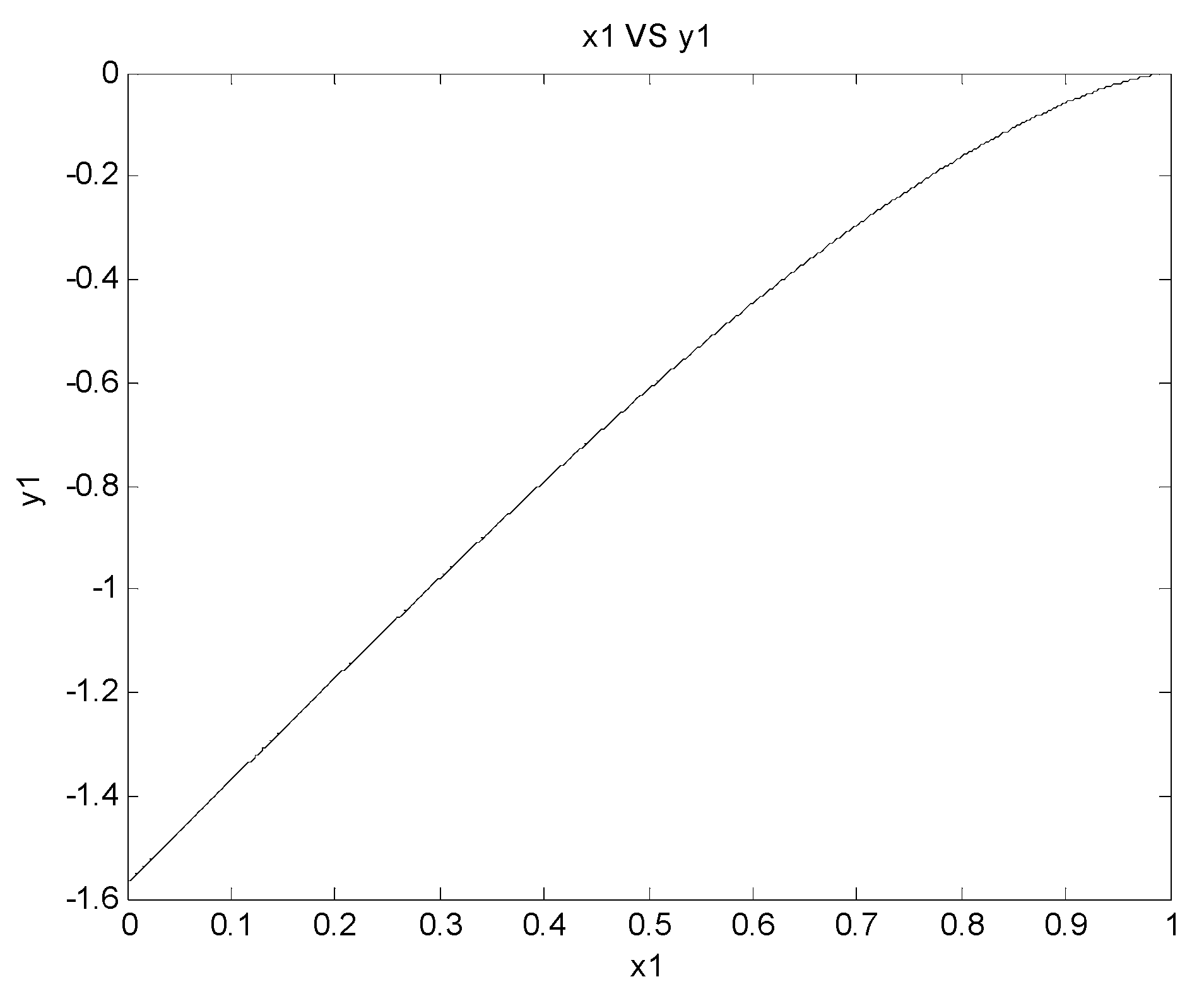
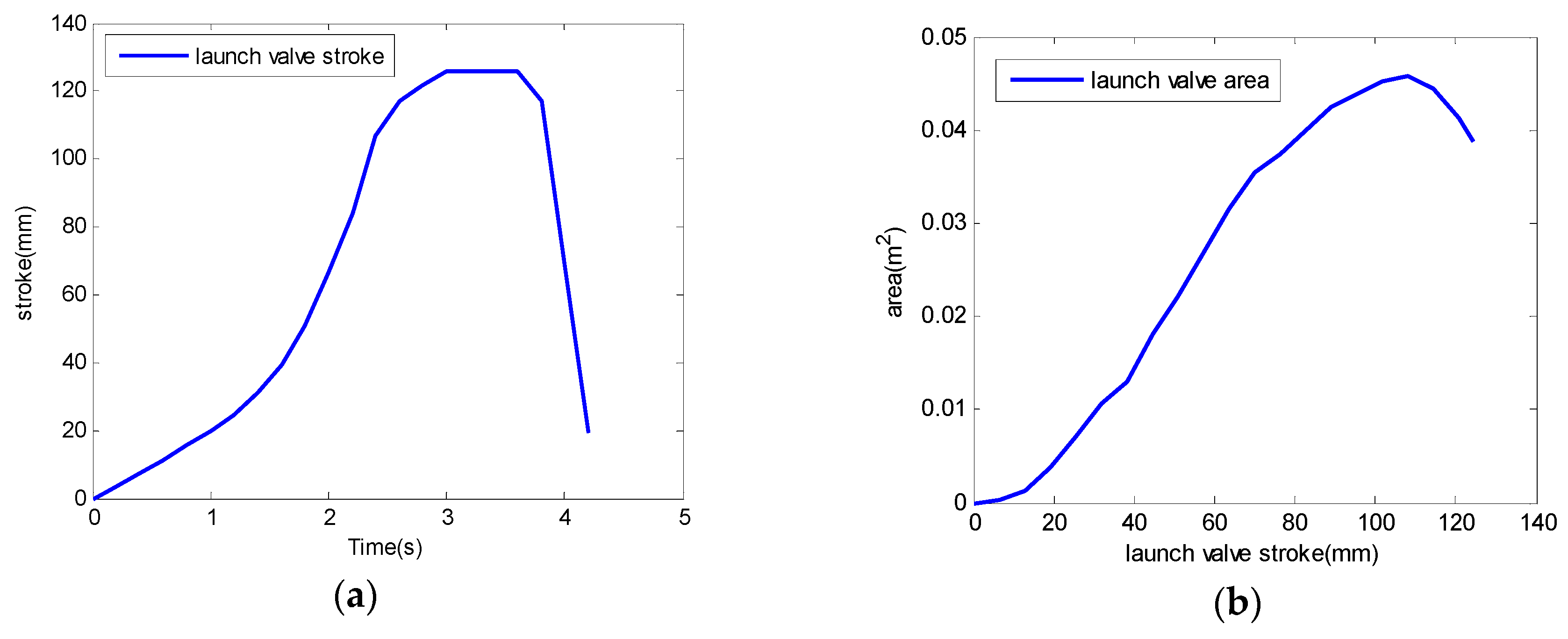
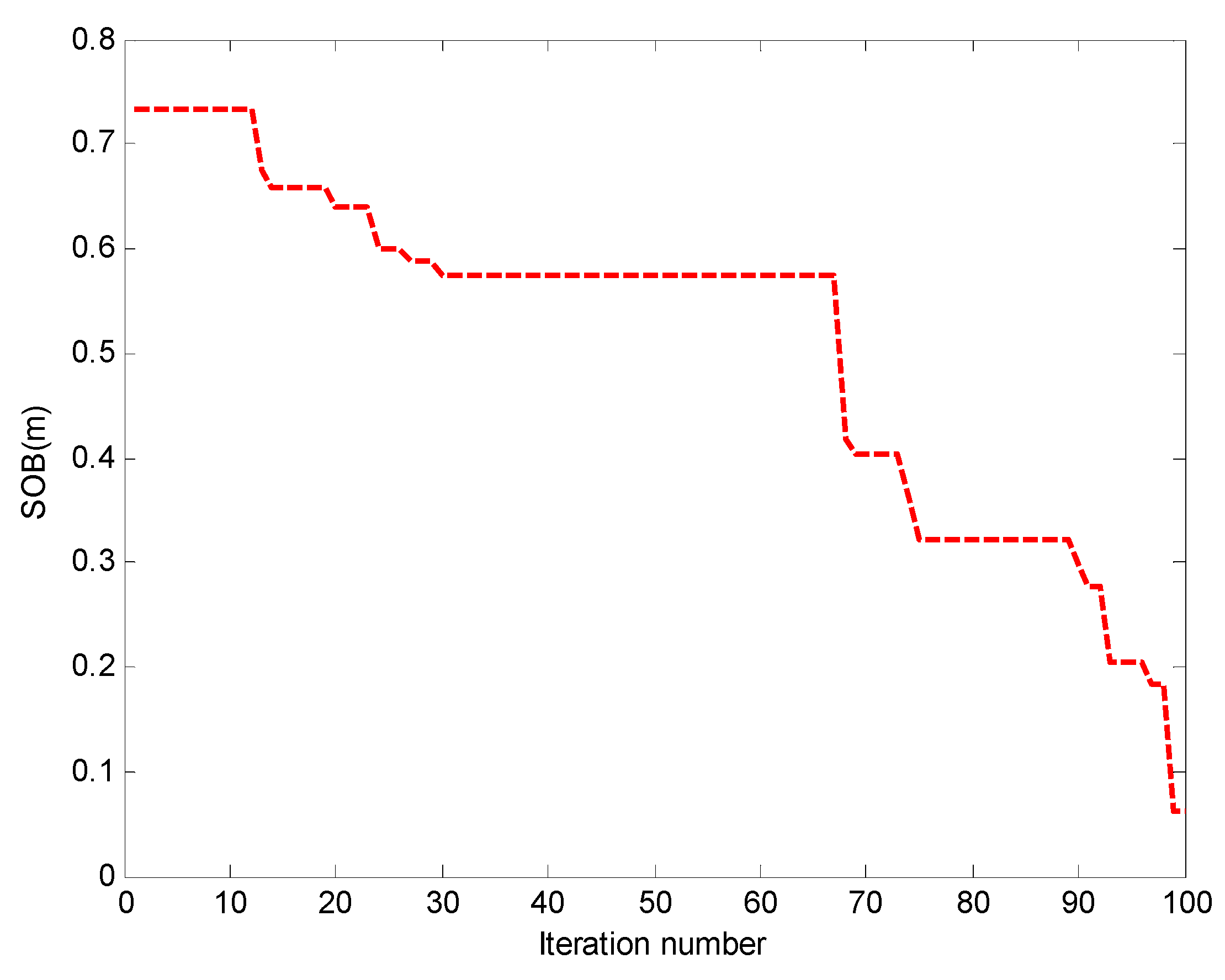

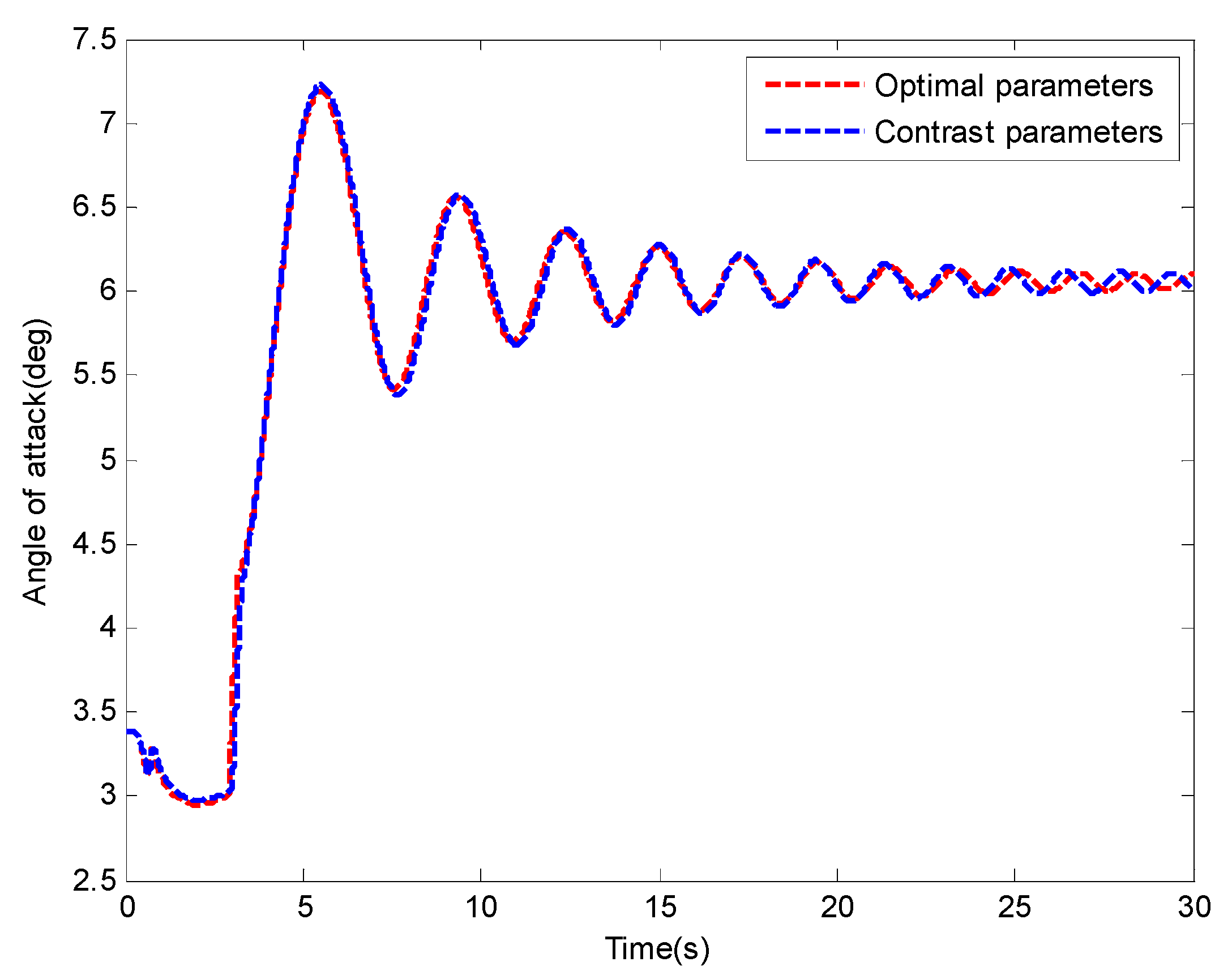

| GA Parameter | Selection |
|---|---|
| Population size | 50 |
| Design variables | 4 |
| Probability of crossover | 0.8 |
| Probability of mutation | 0.01 |
| Selection operator | Roulette-wheel |
| Crossover operator | Single point |
| Mutation operator | Bit-wise |
© 2019 by the authors. Licensee MDPI, Basel, Switzerland. This article is an open access article distributed under the terms and conditions of the Creative Commons Attribution (CC BY) license (http://creativecommons.org/licenses/by/4.0/).
Share and Cite
Zhu, Q.; Lu, P.; Yang, Z.; Ji, X.; Han, Y. Multi-Parameter Optimization for the Wet Steam Accumulator of a Steam-Powered Catapult. Energies 2019, 12, 234. https://doi.org/10.3390/en12020234
Zhu Q, Lu P, Yang Z, Ji X, Han Y. Multi-Parameter Optimization for the Wet Steam Accumulator of a Steam-Powered Catapult. Energies. 2019; 12(2):234. https://doi.org/10.3390/en12020234
Chicago/Turabian StyleZhu, Qidan, Peng Lu, Zhibo Yang, Xun Ji, and Yu Han. 2019. "Multi-Parameter Optimization for the Wet Steam Accumulator of a Steam-Powered Catapult" Energies 12, no. 2: 234. https://doi.org/10.3390/en12020234





